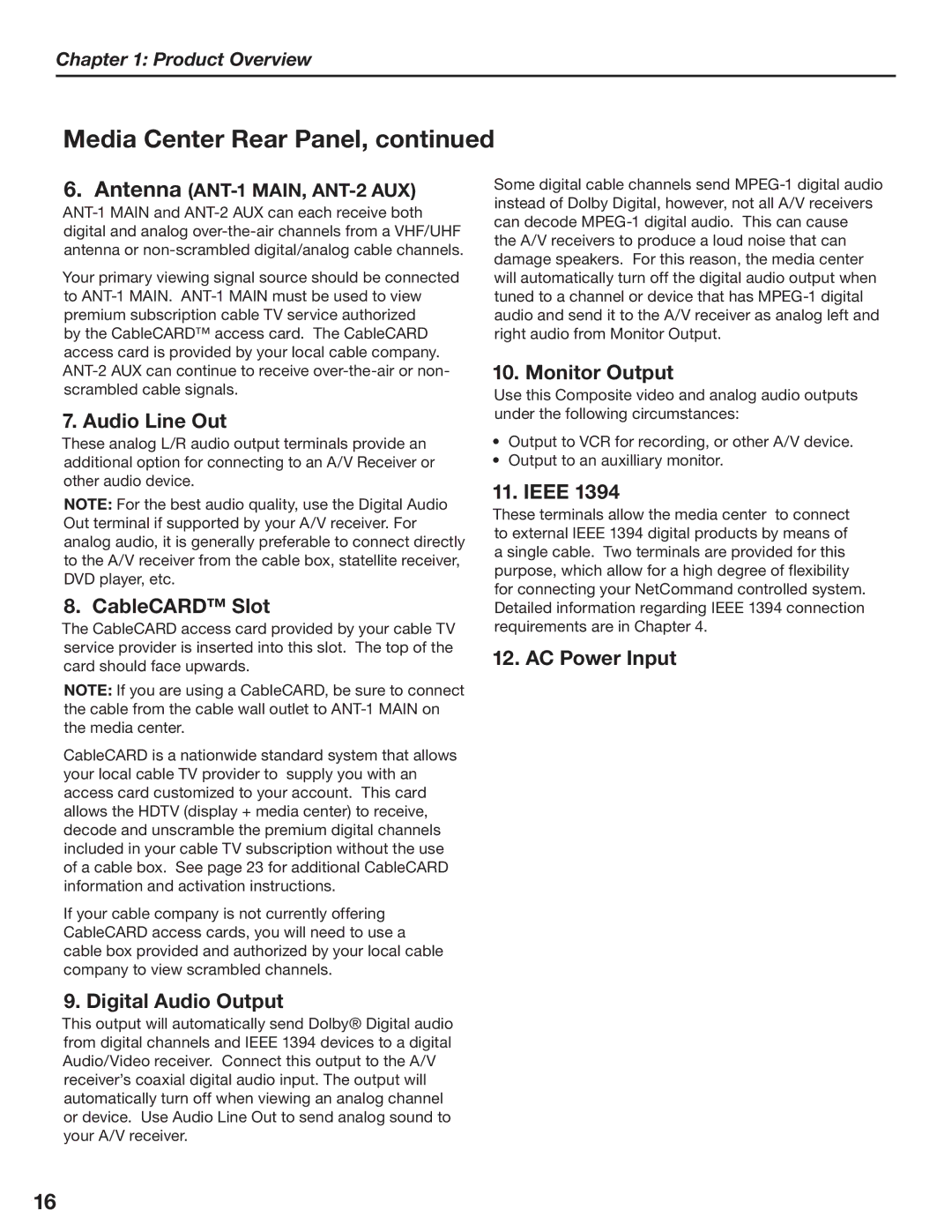
Chapter 1: Product Overview
Media Center Rear Panel, continued
6.Antenna (ANT-1 MAIN, ANT-2 AUX)
Your primary viewing signal source should be connected to
by the CableCARD™ access card. The CableCARD access card is provided by your local cable company.
7. Audio Line Out
These analog L/R audio output terminals provide an additional option for connecting to an A/V Receiver or other audio device.
NOTE: For the best audio quality, use the Digital Audio Out terminal if supported by your A/V receiver. For analog audio, it is generally preferable to connect directly to the A/V receiver from the cable box, statellite receiver, DVD player, etc.
8. CableCARD™ Slot
The CableCARD access card provided by your cable TV service provider is inserted into this slot. The top of the card should face upwards.
NOTE: If you are using a CableCARD, be sure to connect the cable from the cable wall outlet to
CableCARD is a nationwide standard system that allows your local cable TV provider to supply you with an access card customized to your account. This card allows the HDTV (display + media center) to receive, decode and unscramble the premium digital channels included in your cable TV subscription without the use of a cable box. See page 23 for additional CableCARD information and activation instructions.
If your cable company is not currently offering CableCARD access cards, you will need to use a cable box provided and authorized by your local cable company to view scrambled channels.
9. Digital Audio Output
Some digital cable channels send
10. Monitor Output
Use this Composite video and analog audio outputs under the following circumstances:
•Output to VCR for recording, or other A/V device.
•Output to an auxilliary monitor.
11. IEEE 1394
These terminals allow the media center to connect to external IEEE 1394 digital products by means of a single cable. Two terminals are provided for this purpose, which allow for a high degree of flexibility for connecting your NetCommand controlled system. Detailed information regarding IEEE 1394 connection requirements are in Chapter 4.
12. AC Power Input
This output will automatically send Dolby® Digital audio from digital channels and IEEE 1394 devices to a digital Audio/Video receiver. Connect this output to the A/V receiver’s coaxial digital audio input. The output will automatically turn off when viewing an analog channel or device. Use Audio Line Out to send analog sound to your A/V receiver.
16
